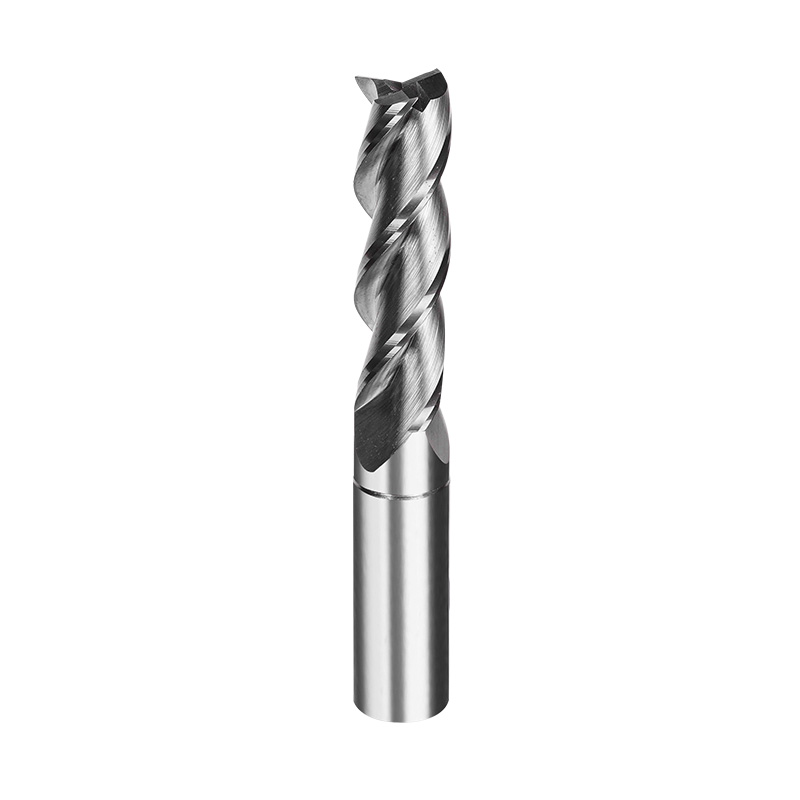Carbide endmills are celebrated for their exceptional hardness and cutting performance, making them ideal for high-speed machining tasks. Unlike high-speed steel (HSS) or cobalt endmills, carbide endmills maintain their cutting edge longer and handle heat more effectively, which is essential for high-speed operations. This durability is due to the carbide material's outstanding hardness and wear resistance, which allow carbide endmills to maintain sharpness and cutting efficiency even under intense conditions.
High-speed machining involves operating at faster speeds and feeds, which can generate significant heat and stress on the cutting tool. Carbide endmills are specifically designed to withstand these conditions, making them essential for achieving high productivity and precision in machining processes.
The primary advantage of carbide endmills in high-speed machining is their ability to operate at higher cutting speeds without compromising performance. The hardness of carbide allows these tools to cut through materials with less deformation, reducing the likelihood of tool wear and extending tool life. This characteristic is particularly important in high-speed operations where maintaining tool integrity is crucial for consistent results.
Carbide endmills also offer outstanding thermal stability. The ability of carbide to dissipate heat effectively means that the endmills can maintain their cutting edges and resist thermal damage even during prolonged, high-speed machining. This stability reduces the need for frequent tool changes, thus increasing overall efficiency and reducing production downtime.

Carbide roughing end mills are designed for aggressive material removal and are an integral part of the high-speed machining toolkit. These endmills are specifically engineered to handle large volumes of material efficiently. Their design typically includes features such as staggered or serrated cutting edges, which help to break up the material and reduce the load on each cutting edge. This results in faster material removal rates and reduced tool wear.
The effectiveness of carbide roughing end mills in high-speed machining lies in their ability to cut through tough materials while maintaining stability. By using carbide roughing end mills, manufacturers can achieve faster cycle times and greater efficiency in the initial stages of machining, setting the stage for finer finishing operations with other types of carbide endmills.
Carbide ball end mills are another crucial tool in the high-speed machining arsenal. Their rounded cutting edge allows for the creation of complex, three-dimensional shapes and contours. This versatility makes carbide ball end mills ideal for applications requiring precise and smooth finishes, such as in mold-making or intricate component machining.
The ball end mill's ability to achieve detailed and complex geometries is a significant advantage in high-speed machining. The rounded end facilitates smooth transitions and detailed work, reducing the need for additional finishing processes. This capability is particularly useful in industries such as aerospace and automotive, where precision and surface quality are critical.
When compared to other cutting tools, carbide endmills stand out due to their outstanding performance in high-speed machining environments. Traditional high-speed steel (HSS) endmills, while cost-effective, do not offer the same level of hardness or heat resistance as carbide endmills. This can result in shorter tool life and increased downtime due to frequent tool changes.
Cobalt endmills, known for their improved hardness over HSS, still fall short compared to carbide endmills in terms of thermal stability and cutting efficiency. Carbide endmills provide a significant advantage in high-speed operations by maintaining cutting precision and extending tool life.
Carbide endmills are indispensable tools for high-speed machining, offering exceptional hardness, thermal stability, and precision. Their ability to perform efficiently under demanding conditions makes them essential for achieving high productivity and outstanding surface finishes. By leveraging the benefits of carbide roughing end mills and carbide ball end mills, manufacturers can enhance their machining processes and achieve good results. Whether in aerospace, automotive, or general manufacturing, carbide endmills play a crucial role in advancing the capabilities of high-speed machining and driving innovation in the industry.